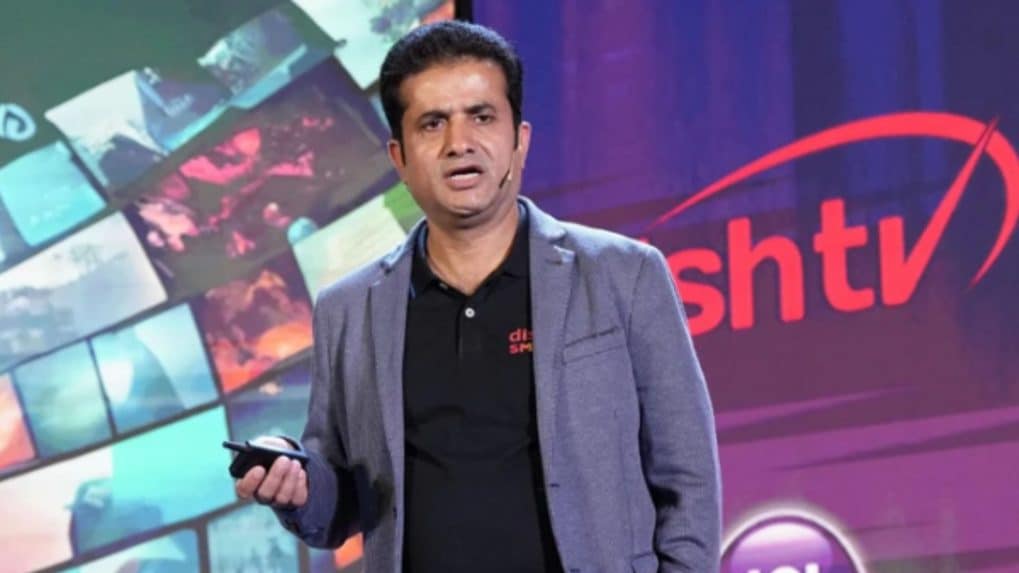We back multiple ratings, DPOs must be part of TRP system: Manoj Dobhal, Dish TV CEO
Dobhal welcomed the proposal of DTH license fee cuts, calling them a long-overdue move that levels the playing field, while outlining the company’s growth strategy through hybrid platforms, smart-TV integration, and technology-driven solutions.
ADVERTISEMENT
Amid regulatory reforms, rising piracy, and the government’s move to introduce multiple television rating agencies, Dish TV CEO Manoj Dobhal lays out the company’s roadmap for its next phase of growth. From pushing for fair TRP measurement to integrating OTT content seamlessly within smart TVs, Dish TV is charting a path through a transforming DTH landscape with a technology-driven, consumer-first approach.
Dobhal emphasizes that regulatory clarity has been a driving force in shaping Dish TV’s strategy. With TRAI pushing reforms on audits, transparency, and license fee reductions, the company sees these moves as leveling the playing field between DTH and cable operators.
Dish TV has been a prominent player in the broadcasting and distribution space. How are you positioning the company for its next phase of growth?
Dish TV is reinventing itself while continuing to draw strength from its legacy. We have always been known as a family entertainment brand that provides clean entertainment with the best technology across all markets and consumer segments. Today, we are evolving into an integrated content platform because consumer behavior has shifted—viewers no longer consume content only through linear TV or OTT; instead, they switch seamlessly between TV, on-demand, and personal devices.
We’re addressing this by building a 360-degree entertainment platform. Our smart TV initiative integrates linear TV, video-on-demand, and OTT streaming in a single destination. This marks a natural extension of the device ecosystem beyond the set-top box, opening new revenue opportunities while keeping Dish TV relevant in the hybrid entertainment era.
Some argue that DTH is a sunset industry. Do you agree?
I would call it a transforming industry, not sunset. The winners will be those who shift from pure-play linear to hybrid, connected ecosystems. Our 360-degree platform, integrating linear and OTT within smart TVs, is one such transformation. Companies that adapt will thrive; those that don’t may struggle.
Where do you see the biggest opportunity for subscriber additions—rural expansion, premium urban households, or hybrid models?
The opportunity is spread across geographies and demographics, but tier 2, 3, and 4 towns stand out. Many of these are still single-TV households, often with outdated sets now due for upgrades. Smart TV penetration is growing fast, and customers increasingly prefer plug-and-play solutions that combine OTT and linear TV. We see significant growth coming from semi-urban and rural India, while maintaining our strong presence in metros.
TRAI has recently pushed reforms on audits and transparency. Do you view this as a step towards clarity and fairness, or as an additional compliance burden for DTH operators?
DTH operators have always been among the most compliant in the broadcasting ecosystem. If anything, these reforms are likely directed more at ensuring compliance in the non-DTH segments of linear TV. From our standpoint, there’s nothing burdensome because we already comply with every requirement.
The government has also proposed to cut DTH license fees from 8% to 3%, a move opposed by cable operators. How do you view this development?
This is a long-overdue and positive step by the Ministry and TRAI. It levels the playing field between cable and DTH. For years, the industry had been asking for this justified demand to be addressed, and we welcome the decision. The cable body may have its own objections, but fundamentally, there is no longer any real difference between cable and DTH—so the rules should be equitable.
There have been recurring disputes between broadcasters and DTH operators. What do you think needs to change in this relationship?
Broadcasters must recognize that DTH still dominates Indian households because of the regulated, family-friendly content experience we deliver—something OTT often lacks. Unfortunately, broadcasters have been less favorable to DTH compared to cable or OTT.
We’re the “obedient students” in the ecosystem, complying with every regulation, and yet expectations from us are the highest. What we need is parity in content pricing, treatment similar to OTT and cable, and a recognition that TV households continue to drive the bulk of ad revenue in India.
The government has opened up the television ratings system to multiple agencies. What’s your view?
Frankly, no one has better visibility into last-mile customer behavior than DPOs. We know who is watching, what they are watching, and when. Broadcasters don’t have that direct interface. Any comprehensive rating system must include DPOs.
Whether there is one agency or multiple, the system should be robust, transparent, and inclusive. Otherwise, disputes about credibility will persist.
Piracy and illegal IPTV services are becoming a menace. How is Dish TV tackling this issue?
Piracy impacts DTH operators the most. We act whenever we detect illegal activity, such as tampered boxes. But IPTV-based piracy is harder to track since it bypasses our ecosystem.
Broadcasters need to take more responsibility here by investing in protective technologies. Too often, pirated apps are pre-installed on TVs sold in the retail market, with sellers openly claiming free access to major channels. DTH cannot fight this alone—it requires collective action from broadcasters and regulators.
How is Dish TV leveraging technology like AI and cloud solutions?
We’ve deployed AI tools in customer engagement to analyze sentiment and resolve issues faster, reducing call center loads. Dish TV is also unique in having an in-house IT team, unlike most DTH players. We’re exploring AI-driven workforce productivity, IT development, and smarter subscriber services. Technology will be central to our transformation.
Our focus is on reversing the revenue decline and moving back to growth. All our initiatives—from hybrid platforms to AI-led engagement—are geared toward stabilizing and then growing our subscriber base and revenues.
Read More: Dish TV narrows net loss to ₹487 crore in FY25, digital pivot cushions bottom line
Read More: BSE, NSE slap fresh fines on Dish TV over board composition issues


